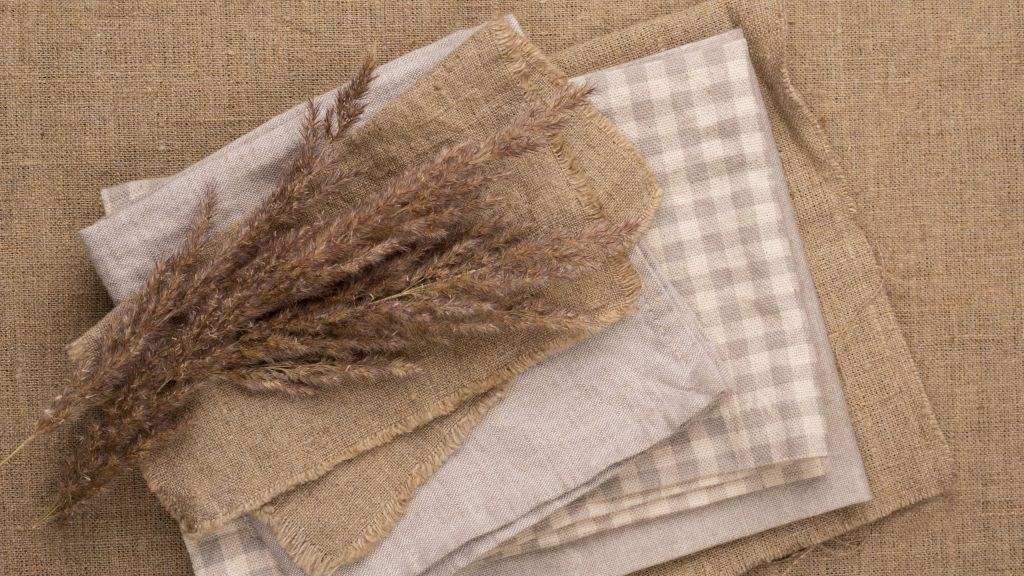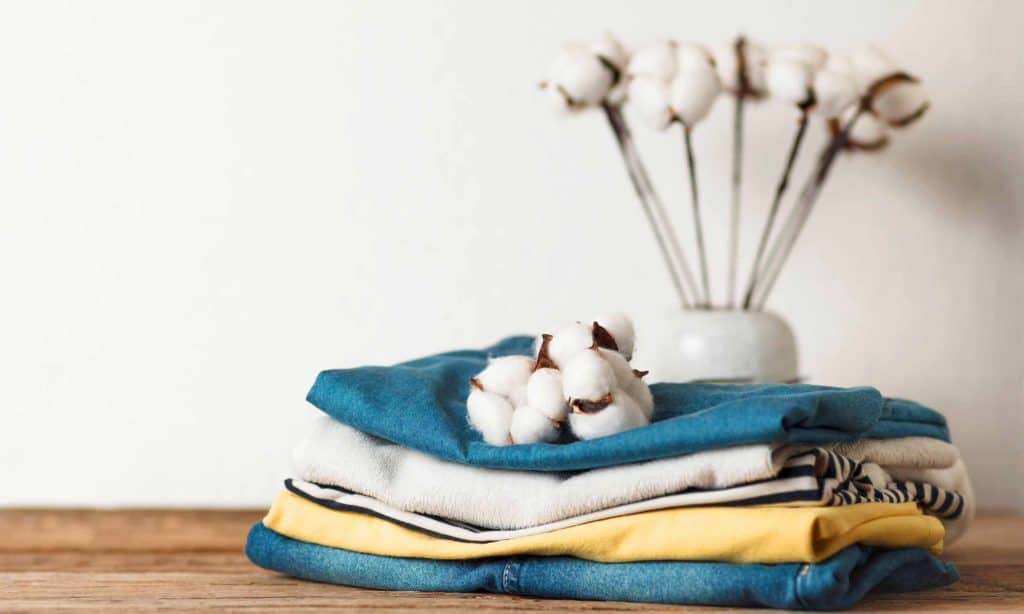The history of fabric manufacture and fashion has always been linked closely with the history of humanity itself. Since the dawn of time and till today, whatever we are wearing depends on where and how we live. Or, maybe, vice versa? Cultural and political revolutions, wars and invasions, great scientific discoveries, and technological progress – all those have determined what we wear today, how we produce and treat our clothing.
The latest technological revolution that has introduced us to plastic and synthetic materials has shaped the market and our consumption culture for several decades. Until recently, when humanity suddenly realized that massive unmanageable production and consumption do not lead to abundance and prosperity, vice versa becomes a reason for its devastating effect on the economy, environment, and society. Pollution, devastating violations of labor and trade ethics, and the growing social gap became an ultimate curse of the beginning of the XXI century. Good news, this madness could not last forever. Terms like “conscious consumption” and “sustainable fashion” are entering our vocabulary. Thanks to responsible brands, manufacturers, and influencers, we learn more about the ultimate backstage of the fashion industry – the impact that our clothes and shoes make on the environment and lives of numerous people who take part in their creation and manufacture.
“The big difference between couture and ready to wear is not design. It is fabrics, handwork, and fittings. The act of creation is the same”
On the one hand, we don’t lack information about eco-friendly materials, sustainable clothes, or organic fabrics today. But this never-ending flaw of articles, posts, and guides can be ultimately overwhelming for a person, who is new to the matter and just decided to start his journey towards conscious consumption. In this article, I decided to collect all the essential information that you need to begin to tell the difference between sustainable and fast fashion and recognize brands that work according to the principles of fair trade and conscious consumption and imposters who try to take advantage of the trend.

Are textile, fabric, and material the same thing?
Those who don’t work in the fashion industry use those words as synonyms. But since you have decided to immerse yourself in the matter and become an ultimately conscious consumer, it might be beneficial for you to start seeing the difference between those terms. Except for the obvious fashion-related uses like apparel, accessories, and home décor, textile has uses in almost every industry from medicine to agriculture and even weapons manufacture.
But not every piece of cloth you might see today is textile. Whatever we usually call textile is a combination of interlacing fibers; textile is a woven or knitted fabric. At the same time, the material is what those fibers are made from. In other words, your jeans textile is made out of denim fabric that comes from raw cotton material. And this material, its origin, and its manufacture are fundamental features that define whether you are wearing 100% natural, organic or synthetic clothes.
The difference between organic and 100% natural fabrics
It is pretty apparent how synthetic man-made materials differ from organic and natural ones. But are “natural” and “organic” the same thing? Many brands play with those terms in their marketing strategies, turning them into a powerful branding tool. As a result, many people get manipulated into thinking that they are wearing organic fabrics and support sustainable fashion with every 100% cotton shirt they buy. But even such a popular and well-known natural material as cotton may come out of various sources and be ultimately organic and sustainable or no better from any fast-fashion piece.
The difference between regular natural and organic fabric lies in several factors and cycles a material goes through before becoming a piece of cloth. Let’s go through the main ones.
– Farming
Both natural and organic materials come from crops, but those crops’ origin makes the real difference. Today, many farmers use GMO (genetically modified) seeds or pesticides in their farming to make crops more resistant to bugs, weather conditions, and other factors. This is how they can gather a larger harvest and earn more money. Farmers use complicated insect-control methods that require more knowledge, experience, and attention to grow organic crops. But as a result, organic fabrics are 100% hypoallergic and safe even for newborns. Moreover, farmers who grow their crops on the same soil repeatedly are forced to waste more water for irrigation. In contrast, organic-oriented farmers use the rotation agriculture principle that saves natural resources.
– Collecting
Technological progress naturally encourages farmers to prefer machinery to hand-picking harvesting methods. But the collection process has a dramatic effect on the final fabric quality. While hand-picked, a crop remains undamaged, keeping all the material’s best features ending up in softer, more sustainable fabric. The machine makes the process much faster, but this method compromises the final product’s quality and lifespan.
– Manufacture
Even if the label on your t-shirt says “100% cotton”, there is a strong chance that its manufacture comprises the use of chlorine and chemic dyes, heavy metals, and other potentially hazardous materials. Not to mention notorious sweatshops and factories that even use children’s labor and human trafficking. Organic materials are safer for your health and conscious as they never exploit any hazardous or hostile manufacturing methods.
Let’s be fair, it is pretty obvious that organic materials come out much more expensive than other natural fabrics. Their manufacture requires much more time, money, and knowledge of qualified experts and dedicated professionals. But the final product, its quality, sustainability, combined with the overall impact, justify the price entirely and give humanity hope to pull itself out of the vicious circle of chaotic consumption and stress, anxiety, and devastation connected with it.
The truth about Vegan materials
Veganism has become one of the hottest lifestyle trends today. Unfortunately, its cruelty-free image and popularity are also widely exploited by cunning marketers who force us to support cut-throat manufacturers, buy and wear potentially dangerous and hazardous items. Many brands that are represented as vegan and cruelty-free today, use synthetic materials such as polyester and lycra in their inventory. Being petroleum-derived, those materials are hazardous for the environment and potentially dangerous for people at every manufacture and use stage. Moreover, even while doing laundry for those clothes we release numerous plastic microfibers into the ocean, viciously damaging the marine environment. So next time you see a claim like “Vegan leather” or “Cruelty-free fur”, think twice before investing your money into another plastic manufacturer.
However, it does not mean that all Vegan materials are hazardous. The progress in synthetic materials manufacture also encourages those industries for innovative eco-friendly solutions. While bio-degradable plastic has already become a steady packaging alternative, the fashion world has gladly welcomed Econyl. This is a material made from synthetic waste like fishing nets, plastic garbage, nylon, etc, that has been collected, cleaned, and recycled into textile yarn. This is only one example of how cruelty-free and synthetic materials may be coins with different sides. Whatever may seem like saving animals` lives can lead to more hazards and pollution, while synthetic manufacture’s unpopular idea can solve a waste problem.
Safe and sustainable materials
As you see, the road to conscious consumption and sustainable fashion can be a slippery slope. Sometimes we are easily deceived by brands that simply manipulate popular definitions and use them to their advantage. But it is ok and as soon as you are willing to dig into the matter, you are willing in the right direction. Let’s have a brief overview of high-performing, safe and sustainable materials.
- Linen. One of the most ancient materials known to humanity is linen, which may be an ultimate embodiment of sustainable plant-based fabric. Even non-organic, linen needs much fewer pesticides and chemicals for successful farming. It absorbs moisture quickly, without feeling damp, and dries much faster than any other natural material. Also, linen tends to become softer and more durable the more you wear it, making it one of the most sustainable materials ever.
- Organic cotton. With its pesticide-free and water-saving farming, organic cotton remains the all-favorite material for all conscious consumption enthusiasts. It is easy to wash and dry, soft, hypoallergenic, and safe even for newborns.
- Hemp. Unlike any other material-providing crop, hemp grows without any need for pesticides or chemical fertilizers, making it perfect for organic farming. Moreover, with its strong and developed root system, hemp builds and preserves topsoil, protecting it from runoff.
- Wood (Lyocell). Made from the wood pipe during an eco-friendly process, Lyocell is a biodegradable and recyclable material, widely used in textile and home décor. It is durable and drapes nicely, which makes it a perfect alternative to silk. Moreover, Lyocell is easily woven to mimic such luxury materials as wool, leather, and even suede.
- Bamboo. Easily renewable, bamboo grows up to 3 feet per day. That is why numerous sustainable fashion enthusiasts have hailed it for a while as an alternative to all known fabric materials. However, mechanically processed, bamboo ends up in a piece of fabric quite similar to linen, but much more rough. To get softer fibers, bamboo should go through complicated chemical processing, including a toxic carbon disulfide.
Humanity cannot ignore the impact manufacture and consumption have on the environment today. We might have reached the turning point that will distinguish whether we shall evolve as a civilization and start to recognize the effect of our actions or keep on depriving our children of a chance to live a happy healthy life, breathing clean air. The key to making a difference is to understand that you invest money in the manufacturer every time you make a purchase, demonstrate that you approve of his action, and encourage continuing the same policy. This is the essence of impacting and forcing the fashion industry to turn towards eco-friendly technologies and trends.








0 Comments